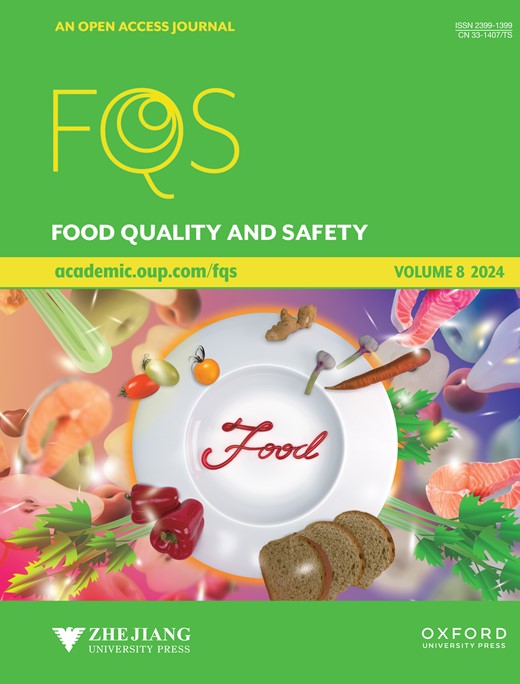Comparative analysis of fruit firmness and genes associated with cell wall metabolisms in three cultivated strawberries during ripening and postharvest
IF 4.4
3区 农林科学
Q2 FOOD SCIENCE & TECHNOLOGY
引用次数: 0
Abstract
Cultivated strawberry (Fragaria × ananassa), a world-famous fruit, is subjected to rapid softening during ripening, resulting in a shorter shelf life and severe economic losses during storage and transportation. However, there is limited understanding of the molecular mechanism underlying differences in fruit firmness during ripening and postharvest among cultivated strawberries. Here, we explored this molecular mechanism by comparing three cultivated strawberries via firmness measurement, transcriptome analysis, quantitative real-time PCR, and correlation analysis, and revealed that FaEXP7, FaPG2, FaPLA, and Faβ-Gal4, as potential softening activators expressed before harvest to determine fruit with more softened texture and shorter shelf life, and the extremely high expression levels of FaCEL1-1 and FaCEL1-3 during ripening might be accelerators to intensify this situation. Additionally, both the enzyme activities of FaCEL and the expression pattern of FaCEL1-3 showed a significantly negative correlation with fruit firmness after harvest, suggesting that FaCEL1-3 might play a key role in promoting strawberry fruit softening not only during ripening but also postharvest. These results showed that the difference in fruit firmness and shelf life among cultivated strawberries was controlled by the temporal expression pattern of a legion of cell wall-associated genes during ripening and postharvest.三种栽培草莓成熟期和采后果实硬度及细胞壁代谢相关基因的比较分析
栽培草莓(Fragaria × ananassa)是一种世界著名的水果,在成熟过程中迅速软化,导致保质期短,在储存和运输过程中经济损失严重。然而,对栽培草莓成熟和采后果实硬度差异的分子机制了解有限。在这里,我们通过硬度测量、转录组分析、实时荧光定量PCR和相关分析对三种栽培草莓进行比较,探讨了这一分子机制,发现FaEXP7、FaPG2、FaPLA和Faβ-Gal4是收获前表达的潜在软化激活因子,可以决定果实质地更柔软、保质期更短。而FaCEL1-1和FaCEL1-3在成熟过程中的高表达水平可能是加剧这种情况的加速器。此外,FaCEL酶活性和FaCEL1-3的表达模式均与果实采后硬度呈显著负相关,表明FaCEL1-3可能不仅在成熟过程中,而且在采后都对草莓果实的软化起着关键作用。这些结果表明,草莓果实硬度和保质期的差异是由成熟和采后细胞壁相关基因的时间表达模式控制的。
本文章由计算机程序翻译,如有差异,请以英文原文为准。
求助全文
约1分钟内获得全文
求助全文
来源期刊

Food Quality and Safety
FOOD SCIENCE & TECHNOLOGY-
CiteScore
7.20
自引率
1.80%
发文量
31
审稿时长
5 weeks
期刊介绍:
Food quality and safety are the main targets of investigation in food production. Therefore, reliable paths to detect, identify, quantify, characterize and monitor quality and safety issues occurring in food are of great interest.
Food Quality and Safety is an open access, international, peer-reviewed journal providing a platform to highlight emerging and innovative science and technology in the agro-food field, publishing up-to-date research in the areas of food quality and safety, food nutrition and human health. It promotes food and health equity which will consequently promote public health and combat diseases.
The journal is an effective channel of communication between food scientists, nutritionists, public health professionals, food producers, food marketers, policy makers, governmental and non-governmental agencies, and others concerned with the food safety, nutrition and public health dimensions.
The journal accepts original research articles, review papers, technical reports, case studies, conference reports, and book reviews articles.
 求助内容:
求助内容: 应助结果提醒方式:
应助结果提醒方式:


